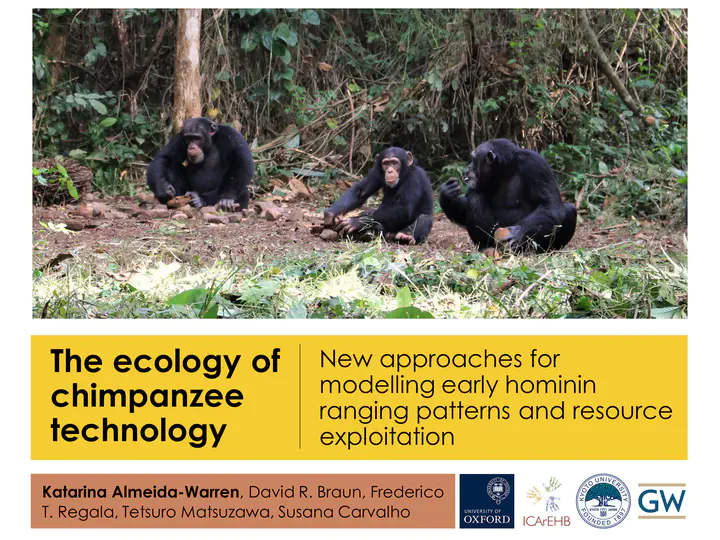The ecology of chimpanzee technology: New approaches for modelling early hominin ranging patterns and resource exploitation
 Image credit: K. Almeida-Warren
Image credit: K. Almeida-WarrenAbstract
Since the discovery of the first Oldowan tools, understanding how our earliest ancestors produced tool assemblages has been key in discerning the evolution of our behaviour. Nevertheless, some of the most fundamental questions remain unanswered: How did early hominins exploit the landscape? How were locations for tool-use selected? Studying tool-use in our closest living relatives, the chimpanzees (Pan troglodytes sp.), particularly their nut-cracking behaviour, offers a unique opportunity to tackle these questions, as it leaves an archaeological footprint akin to the earliest records. However, the lack of a standardized method of archaeological data collection across the primate order, has hindered direct comparative studies. Our study is the first to combine GIS and speleological survey tools: the EOS Arrow Gold GPS/GNSS receiver (HRMS <10 cm), paired with the Disto X2 – a hand-held laser with integrated compass and clinometer. The combined system delivers fast and precise spatial georeferenced spatial surveys, providing an alternative to less reliable traditional methods, and heavy survey equipment, e.g. Total Station. Application of this method in the chimpanzee field site of Bossou (Guinea), where nut-cracking is habitual, has revealed that there is significant variation in artefact density at the 25 documented tool assemblages (n=209, p<0.01). Studying the socio-ecological factors driving this variation will provide valuable insight into the resource exploitation strategies and mechanisms of site selection and re-use in the early hominin record.